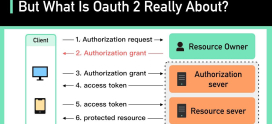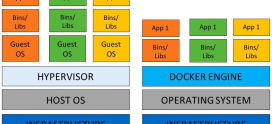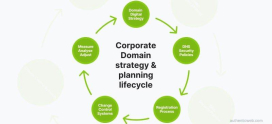
Staying Current: Keeping Your Website Monitoring Tools Up to Speed
Imagine finding out that your website has been down for hours or that a security breach compromised your user’s data—all while you were blissfully unaware. Frightening, right? If you’re a website owner, you’re probably nodding your head furiously. You’re not alone in this; maintaining a website comes with a myriad of challenges and a constant need for vigilance. Whether you’re a small business owner, a content creator, or part of a larger organization, the pressure to keep your website running smoothly can sometimes feel overwhelming. How can you ensure you’re not left in the dark, and what tools are at your disposal to monitor your website effectively?
In this article, we’ll explore practical tips on keeping your website monitoring tools up to speed, addressing common obstacles and providing solutions that can significantly simplify your experience. Think of managing your website like tending to a garden; the right tools and regular attention can make all the difference in keeping everything healthy and flourishing. Let’s dig into actionable strategies that ensure your online presence remains robust and resilient!
Understanding Website Monitoring Tools
So, what exactly are website monitoring tools? Simply put, they are specialized software that help you keep an eye on your website’s performance, uptime, security, and more. Just as a gardener needs to watch for pests that might threaten their plants, we need monitoring tools to alert us to potential problems before they escalate.
Why Are Monitoring Tools Essential?
Consider this: A slow-loading page could affect your user experience and reduce your search engine rankings. And security breaches? They can destroy your reputation overnight. Monitoring tools serve as your first line of defense, helping to:
- Detect Uptime Issues: Ensure your website is always up and running.
- Monitor Performance: Identify and rectify slow-loading pages.
- Enhance Security: Alerts for potential security threats.
- Analyze Traffic: Understand visitor behavior and patterns.
Choosing the Right Website Monitoring Tools
Choosing the right tool can be daunting, with countless options available. But, fret not! Let’s break this down.
Essential Features to Look for
When selecting a website monitoring tool, consider these key features:
- Real-time Monitoring: Instant notifications about downtimes or errors.
- Traffic Analysis: Insights into user behavior and traffic sources.
- Security Features: Malware scans and vulnerability assessments.
- Customer Support: Accessible help when you encounter an issue.
For instance, tools like UptimeRobot and DarazHost provide comprehensive monitoring solutions tailored to meet a variety of needs, whether you’re a startup or a large organization.
Integrating Monitoring Tools Effectively
After selecting your preferred monitoring tools, the next step is effective integration into your workflow. Think of this process like setting up the perfect irrigation system in your garden; you want it to run smoothly without manual intervention.
Seamless Setup
Most website monitoring tools come with detailed guides for setup. Make sure you follow these instructions carefully to ensure everything works properly. Many tools will allow you to:
- Add Your Website: Simply input your URL into the tool.
- Customize Alerts: Set parameters so you receive notifications as needed.
- Integrate with Other Tools: Connect with applications like Slack or email for real-time updates.
Regularly Update Your Monitoring Tools
Just like your garden needs seasonal adjustments, your monitoring tools also require regular updates to stay effective. Outdated tools can lead to inaccurate readings and missed alerts.
Checking for Updates
Ensure you regularly check for software updates or new features. Most platforms will notify you automatically, but it’s wise to manually check every so often. Keeping your tools updated ensures you have the latest features and security measures.
Analyzing Data and Reports
Monitoring your website is not just about receiving alerts; it’s also crucial to analyze the data collected. Think of it as assessing the health of your plants; understanding how they grow tells you what to change for optimal growth.
Key Metrics to Monitor
Some critical metrics you should focus on include:
- Uptime Percentage: Track your website’s availability over time.
- Page Load Speed: Assess how quickly your pages are loading.
- Traffic Sources: Understand where your visitors are coming from.
- Security Incidents: Keep records of any alerts or security breaches.
Regularly reviewing these metrics enables you to uncover trends and take proactive steps to enhance performance.
Implementing Best Practices for Security
Speaking of security, let’s dive into some best practices that can safeguard your website while you monitor it.
Securing Your Website
Here are essential steps to maintain security alongside monitoring:
- Regular Backups: Always back up your website data to prevent loss during a breach.
- Use HTTPS: Secure your users’ data with SSL encryption.
- Update Software: Keep your CMS, plugins, and themes updated.
- Set User Permissions: Control who can access and edit your website.
By integrating these practices with your monitoring tools, you adopt a proactive security stance, making it harder for threats to compromise your website.
Case Study: Real-World Success
Let’s look at a hypothetical case study of a small e-commerce business, GreenThumb Plants. Before implementing robust monitoring tools, GreenThumb faced regular downtimes during peak shopping seasons, losing valuable sales and damaging customer trust. By integrating tools like DarazHost, they could monitor their website in real time, leading to:
- Reduced Downtimes: Uptime increased from 85% to 99%.
- Improved Customer Satisfaction: Customer complaints reduced drastically.
- Enhanced Security: They detected and mitigated attacks before user data was compromised.
This shows the direct impact that effective website monitoring can have on business operations, especially in a competitive landscape.
Staying Informed About Trends and Advancements
The digital landscape evolves rapidly, and staying updated on the latest trends in website monitoring is crucial. Think of it as reading the weather report before planning your gardening activities. Knowledge is power!
Resources to Consider
Here are a few ways to stay informed:
- Blogs and Forums: Follow relevant blogs and participate in community forums.
- Webinars: Attend online seminars that focus on new technologies and strategies.
- Online Courses: Enroll in courses that enhance your digital marketing and monitoring skills.
These resources will ensure you remain sharp and equipped to tackle new challenges as they arise.
Conclusion
Maintaining a website is no small task, and ensuring that your monitoring tools are up to speed can significantly simplify the process. By understanding the importance of these tools, picking the right ones, integrating them into your operations effectively, and staying on top of security measures and trends, you can protect and optimize your online presence. Remember, it’s not just about seeing problems; it’s about understanding and reacting to them. So why wait? Start implementing these strategies today and take your website management to the next level!
FAQs
What are website monitoring tools?
Website monitoring tools are software applications designed to track website performance, uptime, and security issues, providing timely notifications to website owners.
How do I choose the right monitoring tool for my needs?
Consider the size of your website, the features you need (like real-time alerts, traffic analytics), and your budget. Tools like UptimeRobot and DarazHost offer diverse solutions.
How often should I check Website monitoring tools?
While most monitoring tools operate continuously in real-time, it’s prudent to review alerts, metrics, and any updates at least weekly to ensure all monitoring is functioning optimally.
What should I do if an issue is detected by my monitoring tool?
Immediately investigate the alert. Depending on the issue, you may need to check server status, analyze logs, or implement security measures. Quick action minimizes downtime and potential damage.
Can I integrate website monitoring tools with other applications?
Yes, most modern website monitoring tools offer integrations with other applications, such as Slack for notifications, analytics tools, and your Content Management System (CMS) for seamless workflow management.
How can I improve my website’s performance using monitoring data?
Analyze your monitoring data to identify slow-loading pages, track uptime, and understand user behavior. You can make changes based on insights to enhance speed, engage visitors more efficiently, and ultimately improve user experience.









